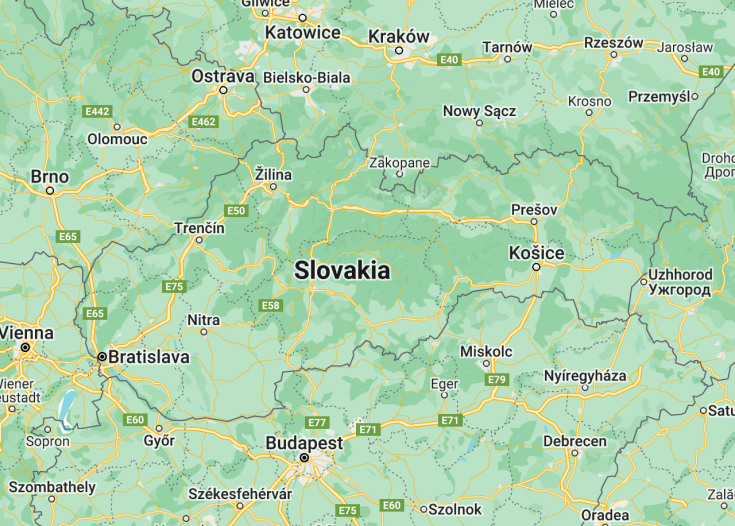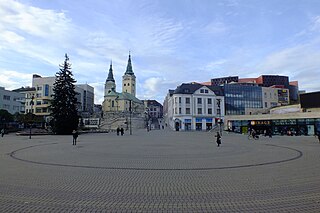Slovakia, a Central European jewel, seamlessly interweaves natural splendor with architectural elegance. Dominated by towering mountain ranges, dense forests, and crystalline rivers, its landscape is a haven for outdoor enthusiasts. The medieval towns, epitomized by Bratislava’s ancient fortifications and narrow streets, tell tales of a turbulent yet vibrant history. Its numerous castles, like the iconic Spiš Castle, stand testament to Slovakia’s rich tapestry of cultures and empires. Here, traditions flourish alongside modernity, offering visitors an authentic experience within the heart of Europe.
Consider a rail journey; Slovakia’s train routes offer scenic vistas, especially through the Tatras Mountains.
Indulge in traditional Slovakian cuisine; dishes like “bryndzové halušky” provide a delightful culinary journey.
Top destinations in Slovakia
Slovakia: the heartbeat of central Europe
| Capital | Bratislava |
| Time in Slovakia | GMT +2 |
| Language spoken | Slovak |
| Population | 5.45 million (Source: World Bank, 2021) |
| Religion | Roman Catholic (62%) Evangelical Church (5.9%) Other Christian (3.8%) Non-religious (13.4%) Others (14.9%) |
| Currency | Euro (€, EUR) |
| Airports | M. R. Štefánik Airport – Bratislava Košice International Airport Poprad–Tatry Airport |
Slovakia, ensconced in the heart of Central Europe, unfurls a rich tapestry of history, culture, and natural beauty. From its roots as part of the Great Moravian Empire to its union with the Czechs in the 20th century, and finally to its sovereignty in 1993, Slovakia’s evolution has been both complex and captivating. The Danubian plains give way to the towering Tatra Mountains, cradling ancient castles, thermal springs, and dense forests within its borders. A nation both medieval and modern, Slovakia seamlessly marries its storied past with progressive aspirations, making it a compelling European destination.
Where is Slovakia located?
Slovakia is a landlocked country located in Central Europe. Bordered by Austria to the west, the Czech Republic to the northwest, Hungary to the south, Poland to the north, and Ukraine to the east, it occupies an area of approximately 49,000 square kilometers. Slovakia’s diverse landscape is characterized by the Carpathian Mountains, deep valleys, and numerous rivers, including the famous Danube. Nestled in the heart of Europe, it is an easily accessible destination from neighboring countries.
What is Slovakia famous for?
Slovakia is famous for its rich history, stunning natural beauty, and vibrant cultural heritage. The country is known for its medieval castles and picturesque towns, such as the capital city of Bratislava with its charming old town and majestic Bratislava Castle. Slovakia also boasts an abundance of national parks, including the High Tatras, which offer excellent opportunities for outdoor activities like hiking and skiing. In addition, Slovakia is famous for its traditional folk culture, which is celebrated through festivals, music, and dance. Visitors can experience the warmth and hospitality of the Slovak people while exploring the country’s unique traditions and customs.
History
Early Inhabitants: Up to 500 AD
Long before the emergence of a distinct Slovak identity, the region now known as Slovakia was inhabited by various tribes. The Celts were among the earliest settlers, establishing oppida or fortified settlements. Their dominion was succeeded by the Roman Empire, which extended its reach to the river Danube, marking the northern boundary of their vast territory. During the migration period, Germanic and later Slavic tribes moved into the area, laying the foundation for the future Slavic population of the region.
Great Moravia: 833 AD – 907 AD
By the 9th century, the Slavic tribes in the region united under the banner of the Great Moravian Empire. Under the reign of King Rastislav, Great Moravia expanded its territory and became a notable power in Central Europe. The period is particularly significant for the arrival of Saints Cyril and Methodius in 863, who introduced Christianity to the Slavs and created the Glagolitic script, a precursor to the Cyrillic script.
Kingdom of Hungary: 1000 AD – 1918 AD
With the decline of Great Moravia, the territory of present-day Slovakia became part of the Kingdom of Hungary. This association lasted for almost a millennium and saw the region integrated into a larger Central European entity. During this period, Slovakia experienced German colonization, especially in mining towns, and saw the rise of significant cultural and architectural landmarks. The Ottoman wars of the 16th and 17th centuries also indirectly impacted Slovakia, as areas to the south were occupied by the Ottoman Empire, leading to a shift in the Kingdom’s center of gravity northward.
Revolution and the Push for Autonomy: 19th Century
As nationalist movements surged across Europe in the 19th century, the Slovak National Revival movement emerged, seeking greater autonomy and cultural preservation for the Slovak people within Hungary. Leaders like Ľudovít Štúr played pivotal roles in this movement, standardizing the Slovak language and advocating for national rights.
First Czechoslovak Republic: 1918 AD – 1939 AD
Following World War I and the dissolution of the Austro-Hungarian Empire, Slovakia joined the Czech regions of Bohemia and Moravia to form Czechoslovakia. This newly formed state was founded on the principles of democracy and national self-determination. However, regional disparities, especially in terms of economic development and industrialization, led to tensions between the Czech and Slovak parts.
World War II and the Slovak State: 1939 AD – 1945 AD
Under Nazi Germany’s influence, Slovakia declared independence in 1939, becoming a client state of the Third Reich. Jozef Tiso, a Catholic priest, led the authoritarian regime that allied closely with Germany. This period was marked by the oppression of Jews and Romani, with many being deported to concentration camps.
Czechoslovak Socialist Republic: 1945 AD – 1992 AD
After World War II, Czechoslovakia was re-established, but the political landscape was rapidly changing. A communist coup in 1948 transformed the country into a socialist republic under Soviet influence. Despite this centralized control, the desire for Slovak autonomy persisted.
Independent Slovakia: 1993 AD – Present
In 1993, following growing tensions and differences in the vision of the state’s future, Czechoslovakia peacefully split into two independent nations: the Czech Republic and Slovakia. Since its independence, Slovakia has undertaken significant economic reforms, joined NATO in 2004, and became a European Union member in the same year. The country has continued to develop, balancing its rich history with modern aspirations.
Visit Slovakia
What to see and do in Slovakia
Slovakia offers a wide range of attractions for visitors to explore. Here are some of the must-see destinations and activities:
- Explore the capital city, Bratislava, with its charming Old Town and iconic landmarks such as Bratislava Castle and St. Martin’s Cathedral.
- Visit the High Tatras, the highest mountain range in Slovakia, and discover stunning landscapes, picturesque villages, and a variety of outdoor activities, including hiking, skiing, and mountaineering.
- Discover the medieval town of Banska Stiavnica, a UNESCO World Heritage site known for its well-preserved architecture and rich mining history.
- Experience the beauty of the Slovak Paradise National Park, with its breathtaking canyons, waterfalls, and hiking trails.
- Immerse yourself in the cultural heritage of the country by visiting the wooden churches of the Carpathian region, which are also listed as UNESCO World Heritage sites.
Events in Slovakia
Slovakia hosts a variety of events throughout the year, offering visitors unique cultural experiences. Here are some notable events:
The Slovak National Day (August 29th) celebrates the anniversary of the Slovak National Uprising and features parades, concerts, and historical reenactments.
The Bratislava Music Festival, held in September, showcases renowned classical musicians and orchestras from around the world.
The Christmas markets in Bratislava and other cities create a festive atmosphere with traditional crafts, food, and music during the holiday season.
Best time to visit Slovakia
The best time to visit Slovakia is during the spring (April to June) and autumn (September to October) seasons when the weather is mild and nature is at its most vibrant. These seasons offer pleasant temperatures for outdoor activities, such as hiking in the mountains or exploring the country’s picturesque towns and cities.
Is Slovakia worth visiting?
Slovakia is definitely worth visiting for those seeking a unique travel experience. The country boasts stunning natural landscapes, rich history, and a vibrant cultural heritage. Whether you’re exploring the charming streets of Bratislava or hiking through the majestic High Tatras, Slovakia offers something for every traveler.
However, it’s important to note that Slovakia may not be as well-known as some other European destinations, and it may not offer the same level of tourist infrastructure as more popular countries. That being said, this can also be seen as an advantage, as it allows for a more authentic and off-the-beaten-path experience. So, if you’re looking for a destination that combines natural beauty, historical sites, and cultural immersion, Slovakia should definitely be on your travel list.












